Definitive Guide to Auckland, New Zealand
Definitive Guide to Auckland, New Zealand Few cities are as geographically blessed as Auckland. While New Zealand’s largest city might be home to almost a third of the country’s total population, nature is never far…
9 Jul 20 · 15 mins read

Definitive Guide to Auckland, New Zealand
Few cities are as geographically blessed as Auckland. While New Zealand’s largest city might be home to almost a third of the country’s total population, nature is never far in this laid-back, outdoorsy city. But Auckland doesn’t just rest on its natural blessings: the city also boasts a sophisticated arts and cultural scene, a fascinating history, and an array of heritage architecture.
This article previews some of the key highlights of Auckland, in preparation for Odyssey Traveller’s tours of New Zealand.
About Auckland
Auckland is situated on a narrow isthmus between Waitemata Harbour of Hauraki Gulf to the east and Manukau Harbour to the southwest. With suburbs stretching west to the rugged beaches of the Tasman Sea; and encompassing the islands of Hauraki Gulf (in from the Pacific Ocean) to the east, few people in Auckland live over half an hour from some some form of water. Over 1/4 of the city’s population own some sort of boat, from which Auckland gets the nickname ‘city of sails’.
This area straddles a volcanic field of over 50 volcanoes, which has produced cones, lakes, lagoons and islands and gives the city its distinct, hilly, topography.
To the Maori, Auckland is known as Tāmaki Makaurau, variously translated as ‘Tāmaki desired by many’ or ‘Tāmaki loved by many’, in reference to the allure of Auckland’s natural bounties. The area was first settled by Maori in around 1350. Maori communities lived in pā, fortified villages or hillforts, on the volcanic cones scattered around the Auckland area. The natural slope of the hill was then terraced, and surrounded with wooden palisades. Inside the pā was a village with sleeping huts and storage places for water and foods, particularly kumera (sweet potato).
Pā were situated on many of Auckland’s volcanic cones, including Maungawhau/Mount Eden and Maungakiekie/One Tree Hill. Maungakiekie, the largest and most powerful pā, is estimated to have had a population of around 5,000 in the 18th century, with the Auckland area having a total Maori population of around 20,000.

However, the introduction of firearms to the Northland by Europeans in the late 18th century upset the balance of power between rival iwi on the North Island. The Musket Wars broke out in 1818, when the Ngāpuhi, an iwi from the Northland, acquired muskets and launched attacks on many North Island iwi, including the Ngāti Whātua, who lived around the Auckland area. Many Maori from the Auckland area fled south, opening the region up to European colonisation.
The first Governor of New Zealand, William Hobson, who co-authored the Treaty of Waitangi, purchased 3000 acres of land from the Ngāti Whatua chief Te Kawau, on the northern edge of the Waitemata Harbour. Hobson selected the site as a new capital, and named it Auckland after one of his patrons, George Eden, the Earl of Auckland. The city was founded on 18 September 1840 and declared New Zealand’s capital the following year.
Though Auckland would lose capital status to Wellington in 1865, the city continued to grow steadily thanks to its harbour and its proximity to the forests of the Northland and the Coromandel Peninsula. In the late 19th century, logging and saw-milling was the largest employer in the region. The ramshackle wooden buildings of the central city were replaced by stone buildings through the 1880s, while ferries linked the city with the North Shore, establishing new suburbs and holiday resorts.
By the 20th century, Auckland was clearly New Zealand’s dominant city financially and culturally, even as Wellington remained the capital. The city’s population quadrupled from 1891 to 1926, referred to as the ‘second Sydney’ by local boosters. Middle and upper-class people left the dense centre, establishing new suburbs around the central city. Architecture increasingly took influence from American forms, with California Bungalows and Spanish Mission-style housing lining the new suburban streets.
Today, Auckland has a population of around 1.4 million. Notably, Auckland is the world’s largest Polynesian city, with a Maori population of around 11.5%, while a further 15.5% comes from other Polynesian nations, including Samoa, Tonga, and Fiji. Out of the remaining population, around 53% are Pakeha, or European New Zealanders, and 28% are of Asian origin or descent, particularly from China and India.
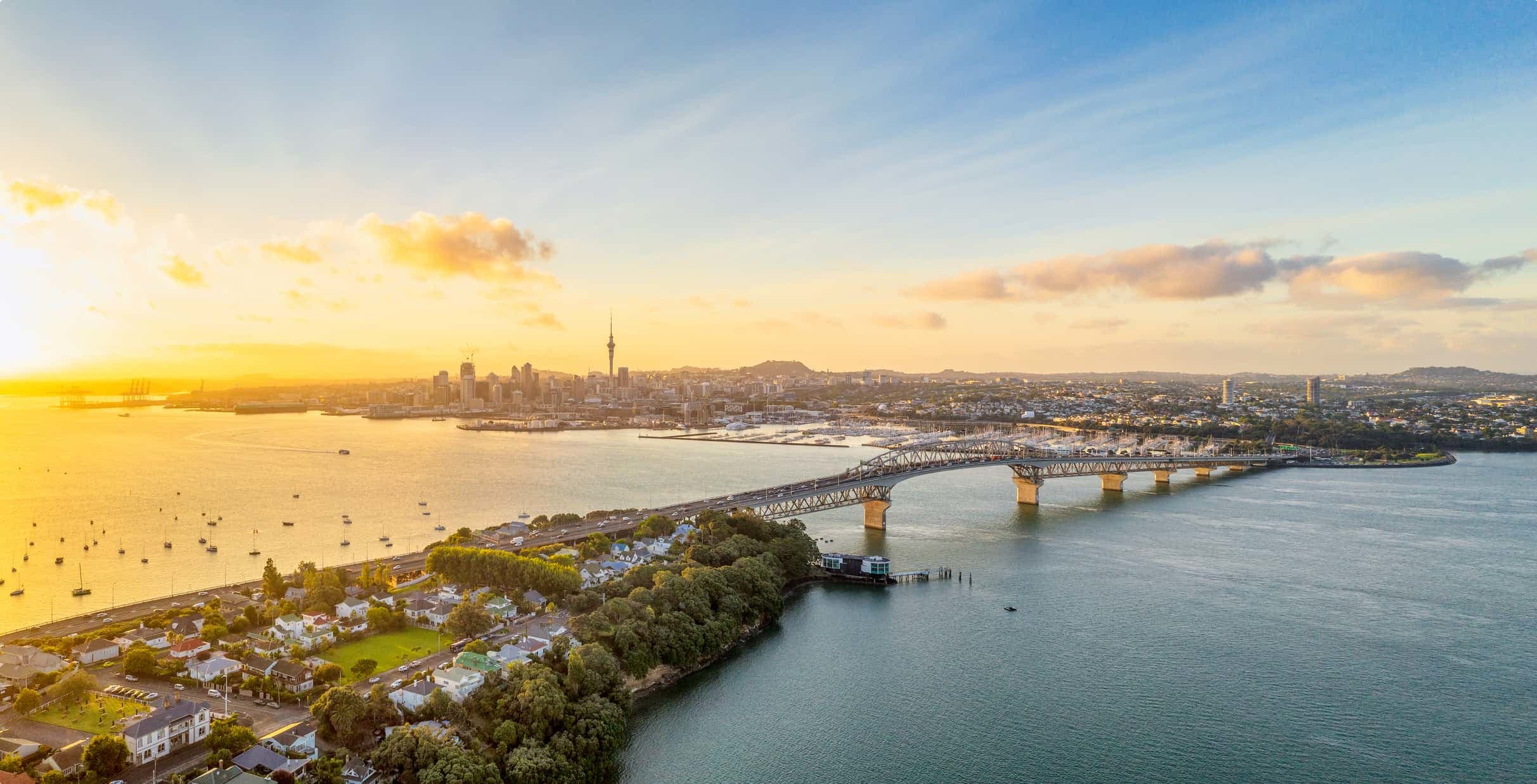
Things to see
Auckland Art Gallery:
Most travellers to Auckland begin in the Central Business District (CBD), the main shopping and financial hub of the city. The Auckland Art Gallery, set below hilltop Albert Park on the edge of the city, is New Zealand’s oldest (established 1888) and one of its most extensive collections of national and international art. The collection includes the best of New Zealand art – including works by Gretchen Albrecht, Marti Friedlander, C.F. Goldie, Alfred Henry O’Keeffe, Frances Hodgkins, Gottfried Lindauer and Colin McCahon – as well as a number of notable international artists, thanks to a donation from the American billionaire Julian Robinson. Valued at $115 million, it was the largest donation of its kind ever made in Australasia. The collection includes works by Paul Cezanne, Paul Gauguin, Pablo Picasso, Henri Matisse, Piet Mondrian, Salvador Dali, Georges Braque and Fernand Leger.
The Domain and the Auckland War Memorial Museum:
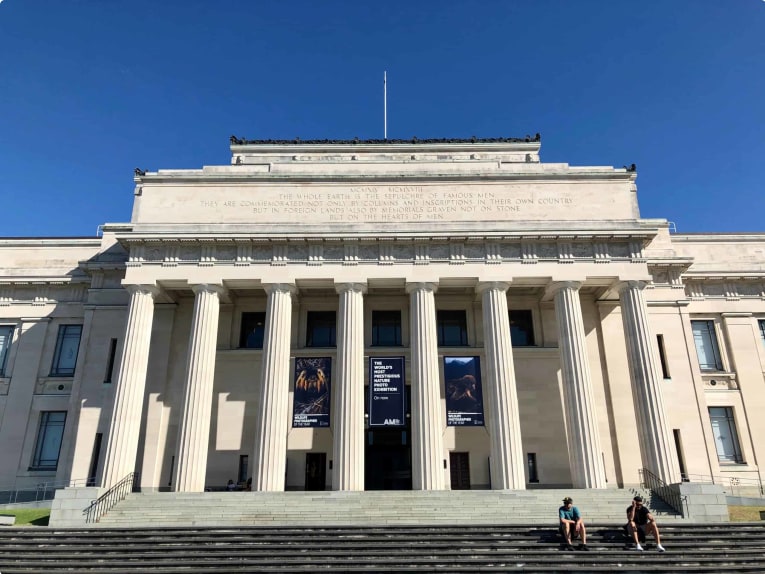
To the east of the city is the 75-hectare Domain. Auckland’s oldest and one of its largest parks, it is centred on the Pukekawa crater rim. Sitting on the rim is the Auckland War Memorial Museum, the striking neo-classical facade of which (built 1929) is prominent in the Auckland skyline. Inside the museum, you’ll find an incredible collection of more than 1,000 Maori taonga, or treasures. Highlights include Hotunui, a meeting house built in 1878 as a wedding gift, and Te Toki ā Tāpiri, the last great war canoe used in battle, surrounded by a vast collection of objects used in every day life. The Maori Natural History Gallery explores Maori understandings of the natural world, allowing visitors to understand Maori spirituality and scientific belief. A Maori cultural performance occurs at 11 am daily.
The War Memorial Museum also explores the geology and post-settlement history of New Zealand, with an exhibition on New Zealand at War. On the 25th of April, the building plays host to Auckland’s ANZAC commemorations, befitting its dual role as a war memorial.
Newmarket and Remuera:
Heading south from the city centre you’ll strike the inner-city neighbourhoods of Newmarket and Remuera. Strategically located at the junction of railway lines heading north, south, and west, and at the meeting point of the Great South Road and Manukau Road, Newmarket has long been one of Auckland’s commercial hubs. In the 19th century, the area became home to the city’s major livestock market, drawing business away from central Auckland to the more spacious ‘New Market’, from which the suburb’s name was derived. In the late 19th century the area was also home to railway workshops.
Overlooking Newmarket from a bluff is Highwic, one of Auckland’s premier historic houses. Built in 1862 for Alfred Buckland, a wealthy colonial settler and landowner, the mansion is an example of Carpenter Gothic, in which Gothic revival detail – more authentically rendered in stone – was incorporated into a wooden structure. Highwic is significant as one of the few Carpenter Gothic structures found outside the United States, and stood amongst the generally Georgian-style structures that dominated Auckland at the time. The mansion was bought by the New Zealand Historic Places Trust in 1979, and is now open to visitors as a museum and venue space.
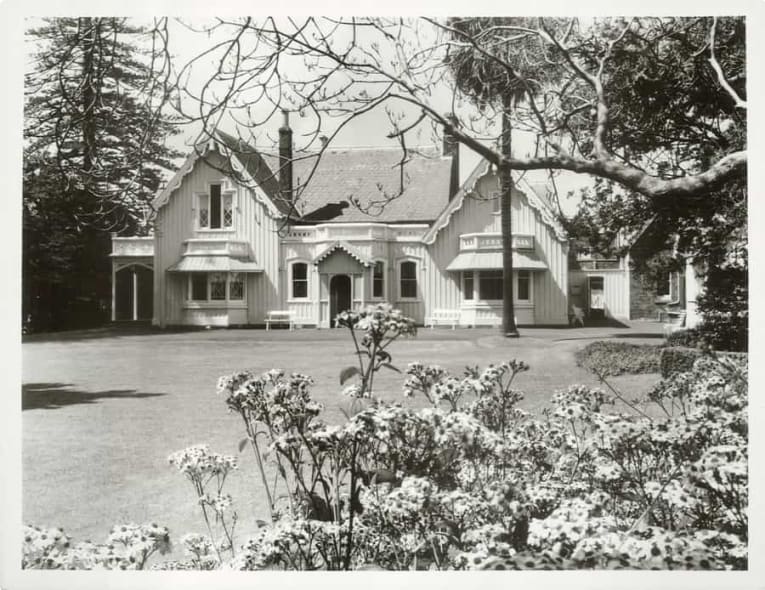
Newmarket increasingly became a shopping hub through the 20th century. In 1912, the main street, Manukau Road was renamed Broadway, inspired by New York’s central avenue. The area took more than its name from America, as Broadway became dominated by American-style Streamline Moderne architecture in the 1930s and 1940s. During the Second World War it became a hub for American soldiers stationed in the city, with Frisco’s Hamburger and Coffee Bar impressing the American troops thanks to the quality of the burgers, particularly the amount of fresh vegetables used! By the 1960s, much like its New York namesake, Auckland’s Broadway was lined with neon sights, the greatest concentration in all New Zealand.
Today, Newmarket is Auckland’s major shopping and entertainment hub, home to over 400 speciality stores (including two major shopping malls), as well as cinemas, bars, restaurants, and cafes. Sadly, a number of the area’s Art Deco and Moderne buildings have been destroyed by redevelopment.
To the east of Newmarket is Remuera, a picturesque residential suburb. The name Remuera comes from Remu-wera, likely the Maori name for what is now Mt. Hobson. The area was home to a Maori pā and kainga (village). Remeura remained Maori land for longer than much of central Auckland, with the chief Te Kawau and his son Te Hira refusing to sell in 1841. In May 1844 a great feast was hosted by Waikato iwi at Mt Hobson. The event attracted thousands of Maori, including the Waikato chief Te Wherowhero, who was later to become the first Maori King.
The Crown purchased the southern slopes of Mt Hobson from 1847-1854. Remeura subsequently became an area of small farms, with early settlers building elaborate, two-story houses, and turning the scrubby slopes into paddocks of grain, cattle, and sheep. In the 20th century, Remuera became an affluent Auckland suburb, home to professional and business families attracted to the hilly landscape and historic architecture.
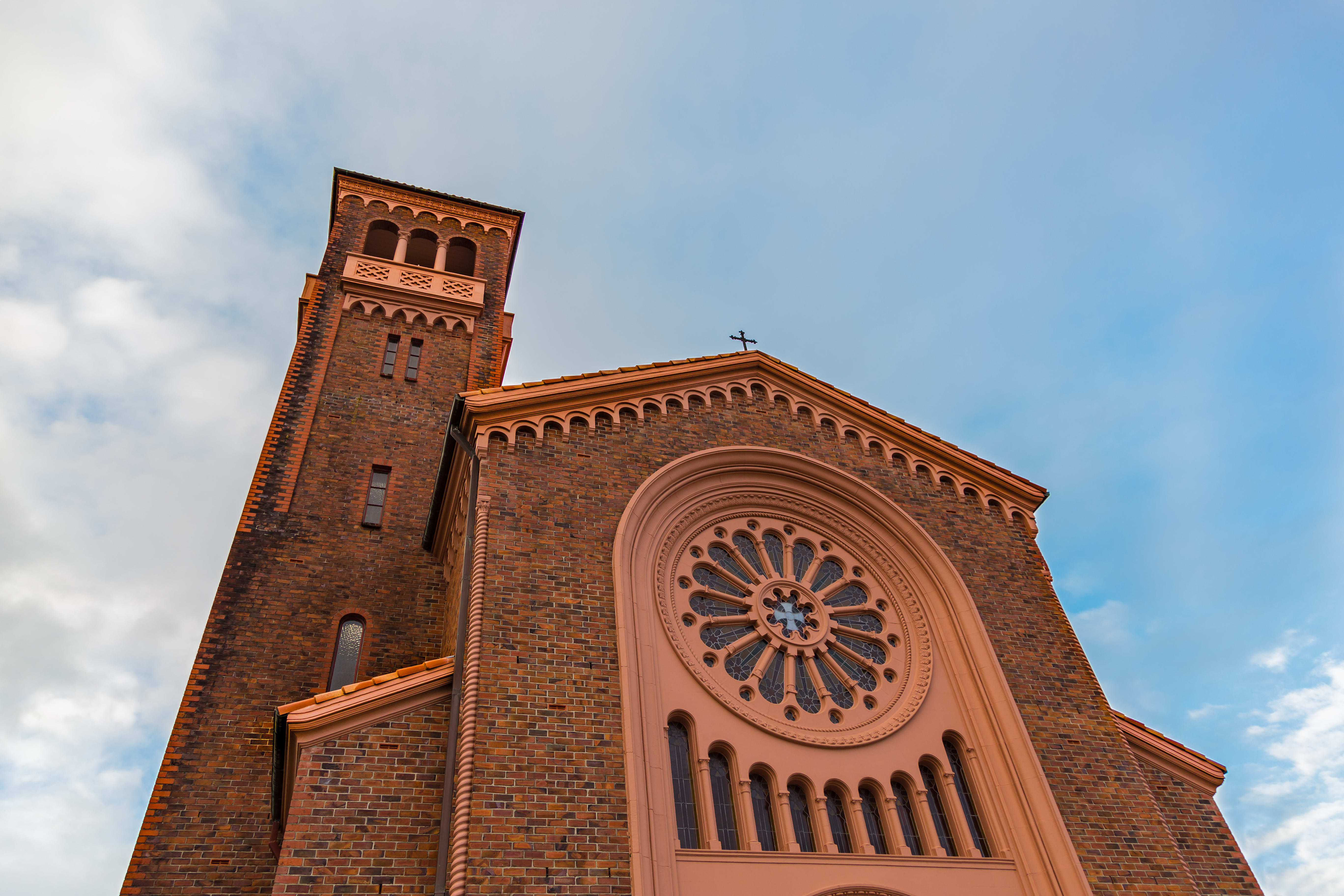
The suburb has a number of heritage buildings, including the award-winning Neo-Georgian Remuera Community Library (1926), the Edwardian Baroque Old Remuera Post Office (1914), and the Remuera Pharmacy (1909), New Zealand’s oldest continuously open pharmacy. The 1930s St Michael’s Church won the New Zealand Institute of Architects Gold Medal in 1933. Notable residential structures include Cotter House (c. 1848), one of the oldest houses in Auckland, built for settler and noted teetotaller Joseph Newman, the Arts and Crafts Burns House (1905), and No. 4 Garden Road, built by the notable architect C. Reginald Ford as his personal residence.
Mt. Hobson/Ōhinerau is one of Auckland’s best preserved volcanic cones, with terraces and kumera pits still visible from the days of Maori settlement.
For more information, check out the Remuera Heritage Walk, prepared by the Auckland City Council.
Tamaki Drive:
Tamaki Drive is the coastal route tracing the south-east of the Waitemata Harbour, offering sweeping views and beautiful beaches. Heading south-east from the city, the first beach you’ll encounter is small, sandy Okahu Bay, with sweeping views of the city skyline.
After Okahu Bay, Tamaki Drive is loomed over by the Bastion Point headland, home to an extensive park reserve. The area was given to the state by the Ngāti Whātua during the Russian Scare of 1885, in which New Zealanders became convinced of the imminent invasion of New Zealand following issues between Russia and the British colony in Afghanistan. A military outpost was built at Bastion Point, offering sweeping views over Waitemata Harbour. A World War Two gun embarkment can be seen, one of many lining the harbour.

Bastion Point is also home to the Savage Memorial, a grand memorial dedicated to the first Labour Prime Minister of New Zealand Michael Joseph Savage. Regarded as the founder of New Zealand’s welfare state, Savage was likely New Zealand’s best-loved Prime Minister, whose portrait hung in the houses of Labour supporters for decades.
The memorial was built following Savage’s death in office in 1940. Auckland architects Tibor Donner and Anthony Bartlett won the competition to design the memorial in 1941, developing an Art Deco mausoleum and obelisk made of pre-cast concrete, flanked by Oamaru stone and Dunedin quartz. They also designed the surrounding area, with a sunken garden and reflective pool, surrounded by hedges and flower gardens. Officials were amazed at the popularity of the memorial on opening, which has become a major attraction for locals and visitors to Auckland ever since.
In the 1970s, Bastion Point became a flash point in the struggle for Maori land rights, when the Crown announced that it was going to sell the land to build luxury housing. In response, the Orakei Māori Action Committee occupied the site for 506 days. The occupation ended on 25 May 1978, when 600 police and army personnel forcibly removed the protesters. The park was returned to the Ngāti Whātua in the 1980s as part of a Treaty of Waitangi settlement process.

On the other side of Bastion Point, Mission Bay beach is lined with white sand and a huge grassy area centred on an Art Deco fountain, gifted to the council in 1950. The area is also home to a range of cafes and restaurants. Kohimarama is Tamaki Drive’s longest beach, primarily used for swimming. St Helier – named in the 1870s for its similarity to the town of St Helier, Jersey – was a popular resort in the late 19th century, and is now a suburb of Auckland, popular for its sweeping views of Rangitoto Island and village-like atmosphere.
Devonport:
The maritime village of Devonport is one of Auckland’s oldest suburbs, founded in 1841. Located on a North Shore peninsula, it is a 10-minute ferry ride across Waitemata Harbour from the CBD. The peninsula consists of two volcanic cones, Takarunga/Mount Victoria, with panoramic views of Waitemata Harbour and the Auckland skyline, and Maungauika/North Head, which offers views over the Hauraki Gulf islands.
Devonport was first developed thanks to Governor Hobson, who chose the area for the Naval Base in 1841 thanks to its deep waters in contrast to the south harbour, where the sea was shallower. The Base remains in operation today, with a museum telling stories of New Zealand’s naval history. North Head was long a protected military position, thanks to its strategic location overlooking the shipping channel that enters the harbour. Today, it is open to the public as a park, with old gun emplacements and underground tunnels open to be explored.
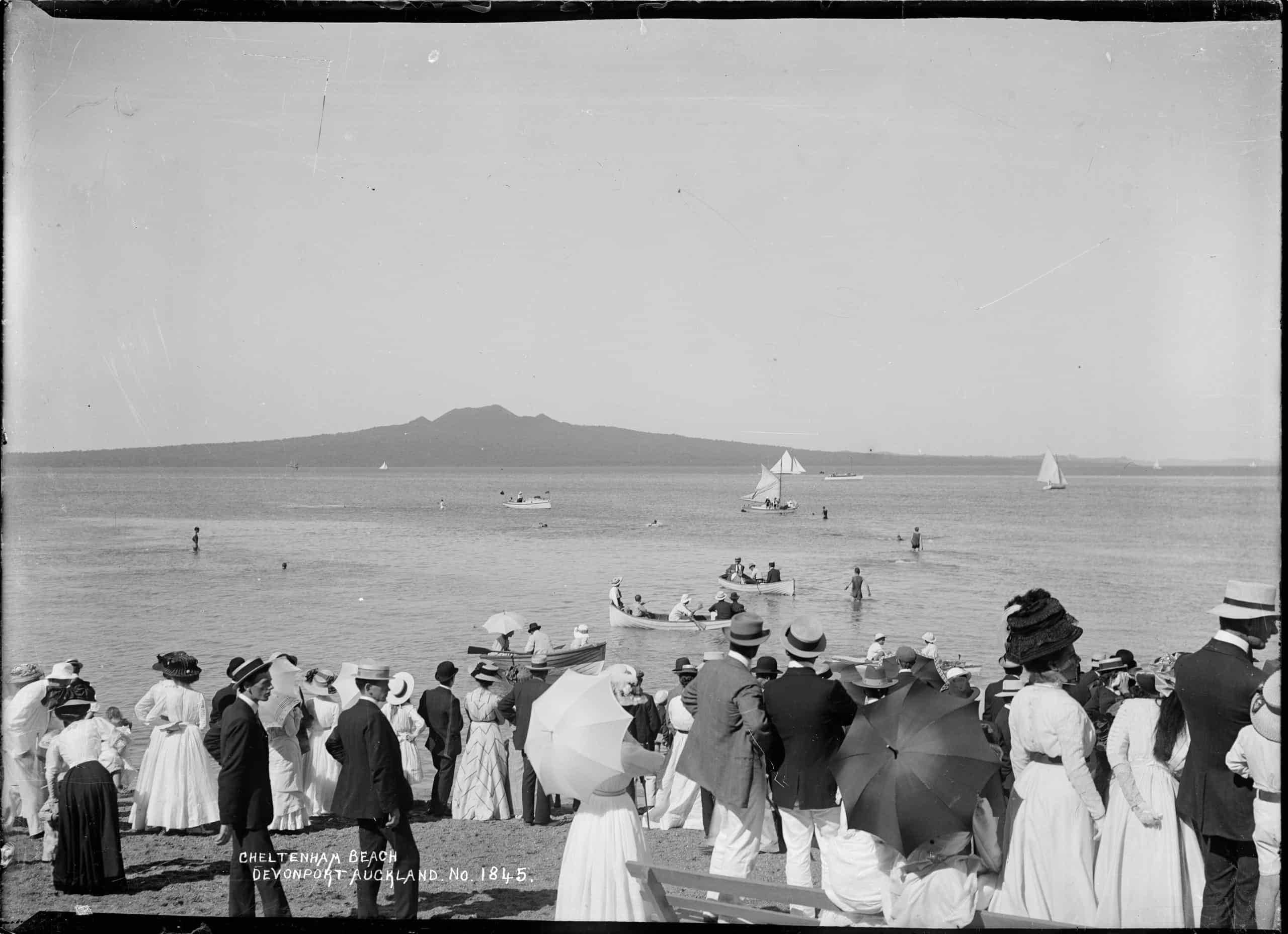
Devonport became a suburb in the late 19th century. Today, the streets are lined with wooden colonial villas built in the late 19th and early 20th centuries, along with a number of grand stately homes overlooking the harbour.
From the late 1920s, Devonport and the North Shore began to attract many of Auckland’s writers, thanks to the slow pace of life, cheap bach (holiday cabin) accommodation, and proximity to nature – beautiful bays and beaches overhung by pohutukawa trees. The poet and satirist A.R.D. (Rex) Fairburn lived in the area from 1946 until his death in 1957. His home was a gathering place for artists, writers, and musicians – and once played host to an entire Italian opera company! Devonport was also home to the writer and poet James Bertram, who interviewed Chinese Communist leader Mao Zedong in 1936, and the poet and novelist Kevin Ireland.
To learn more about the area’s literary history, check out the council-run North Shore Literary Walks.
Today, Devonport continues to attract a number of writers, drawn by its literary vibe. It remains a popular destination for Aucklanders looking to get away from the city, thanks to its heritage architecture and eclectic independent bookstores, cafes, and speciality shops.
Rangitoto Island:
With its distinctive symmetrical black cone, Rangitoto Island is a symbol of Auckland, and the most iconic of the 47 islands scattered across the Hauraki Gulf. The volcanic eruption which created the island occurred just 600 years ago, and was observed by Maori people, making it New Zealand’s youngest volcano. At 260 metres, it is the highest volcanic cone in Auckland, and the closest island to the mainland.
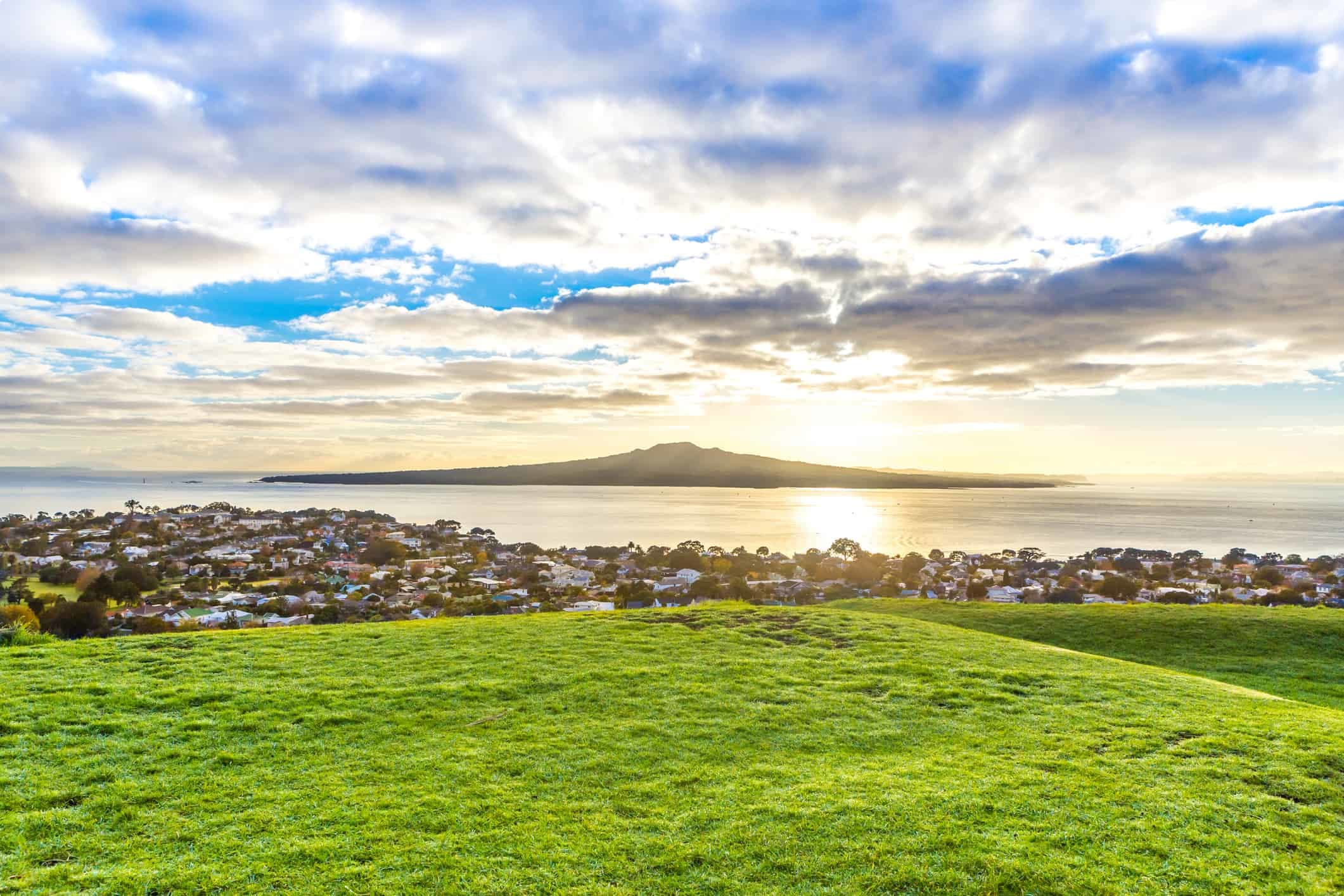
The Maori people never lived on the island, but it was used as a strategic lookout point and had importance in a number of myths. The Maori name is Nga Rangi-i-totongia a Tamatekapua which translates to ‘the day the blood of Tamatekapua was shed’. The name refers to an incident in which Tamatekapua, the chief of the Arawa canoe fought a major battle with the resident iwi Tainui at Islington Bay on Rangitoto over some form of adultery. As a result, Tamatekapua’s face was bloodied and bruised.
Rangitoto Island was bought by the crown in 1859, and was quarried until 1890, when it became a public reserve. With the exception of a few bachs of dubious legality built in the interwar era, and the use of the island for military installations during World War II, Rangitoto has mostly been preserved from development.
The lava rock of the island is home to over 200 native plant species. It boasts the world’s biggest collection of crimson-flowered pōhutukawa. Thanks to the hot conditions and lack of soil, plants on the island form unusual hybrids and adopt strange behaviours – in particular, the Northern rata has hybridised with the pōhutukawa to form a number of variations.
In 2011, the Department of Conservation declared Rangitoto pest free, after the removal of pests such as possums and wallabies. As a result, native plant and wildlife has been restored to the island. Pōhutukawa forest provides shelter and shade for other species like mingimingi, koromiko and puka; while the trees attracted native birds, who arrived on their own, including the kākāriki, kākā parrot, and tūī. Other native animals were introduced by the Department of Conservation, including the saddleback and whitehead.
Today, Rangitoto is a popular spot for visitors. Most walk to the summit, a gentle 3.1 kilometre incline, for sweeping views of Auckland and the Hauraki Gulf. A detour takes you to the Lava Caves, twisting tunnels and caves left behind during the last explosion. Wreck Bay is a graveyard of shipwrecks, driven to shore when the easiest way to get rid of obsolete vessels was to leave them on the shore to deteriorate. The wrecks have been preserved thanks to their heritage value, and are open to be explored by visitors to the island.
Waiheke Island:
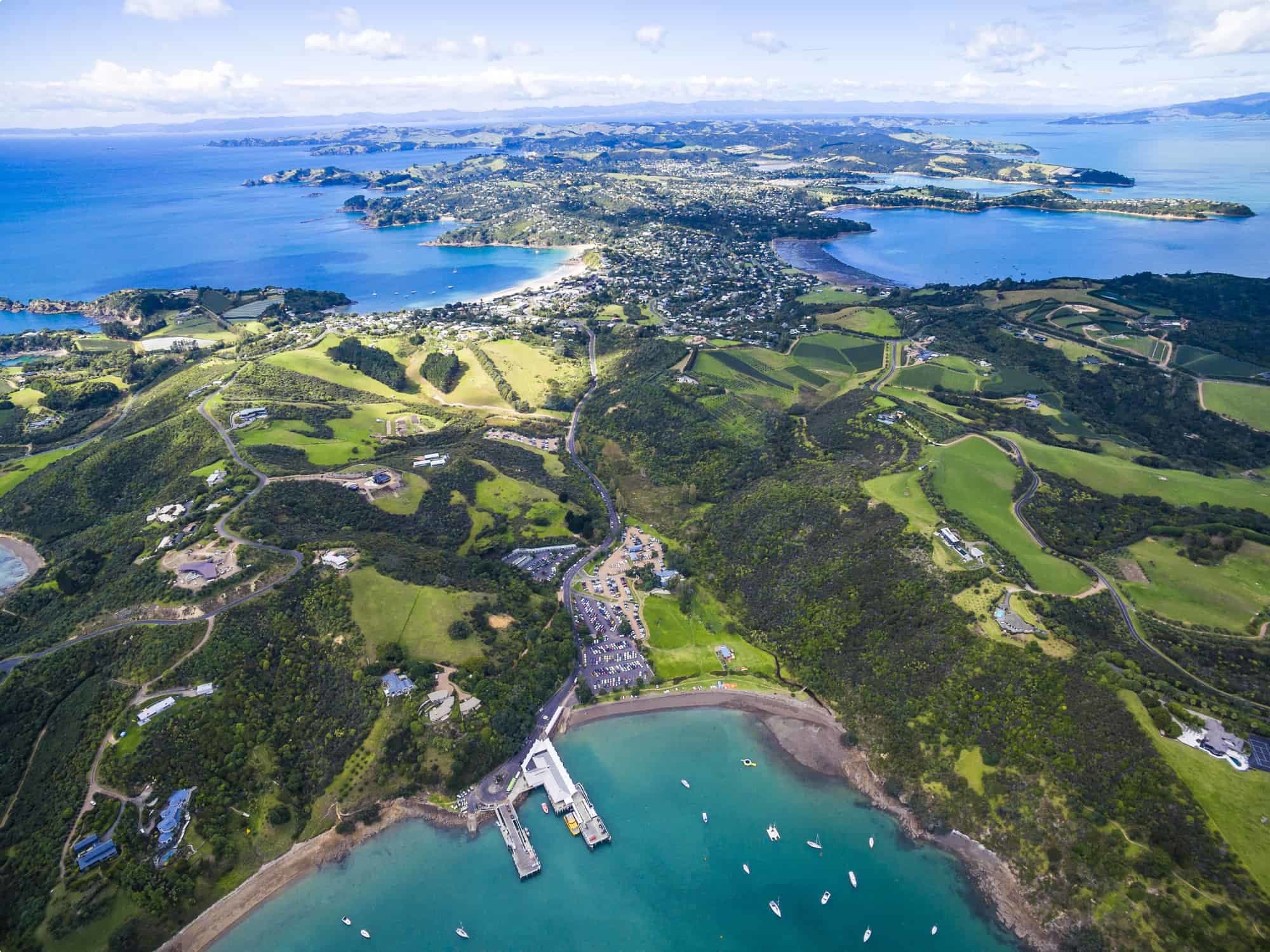
Waiheke Island is the largest and most populous island of the Hauraki Gulf, around 20 kilometres east to west and 10 kilometres north to south at its widest points. The island has a microclimate, warmer and drier than the rest of the Auckland region, protected by cold, winds from the Tasman Sea by the Auckland isthmus.
Waiheke was traditionally inhabited by the Te Arawa and Hauraki tribes, with a number of headland pā remaining today. In the 1890s, the island became a popular resort, thanks to its beaches and warm, dry microclimate. In the 1960s and 1970s, the island became a magnet for hippies and artists.
Today, Waiheke is a popular holiday and day trip destination, thanks to its picturesque scenery and fantastic local wineries, accessible from Auckland in 35 minutes by boat. The vibe has become increasingly upscale, as many of Auckland’s wealthy have bought mansions on the island. Waiheke has also become a holiday destination for international celebrities, including Bill Gates, Madonna, Justin Timberlake, and Beyoncé.
Though Waiheke produces just 1% of New Zealand’s wine, the island is home to a number of celebrated vineyards. The warmer and drier climate here enables a longer growing season than on the mainland, while the ancient soils of the island – with hard topsoil, rapid drainage, low levels of nutrients – force the vines to work harder to survive. The wines that emerge from these grapes are rich and intensely flavoured.
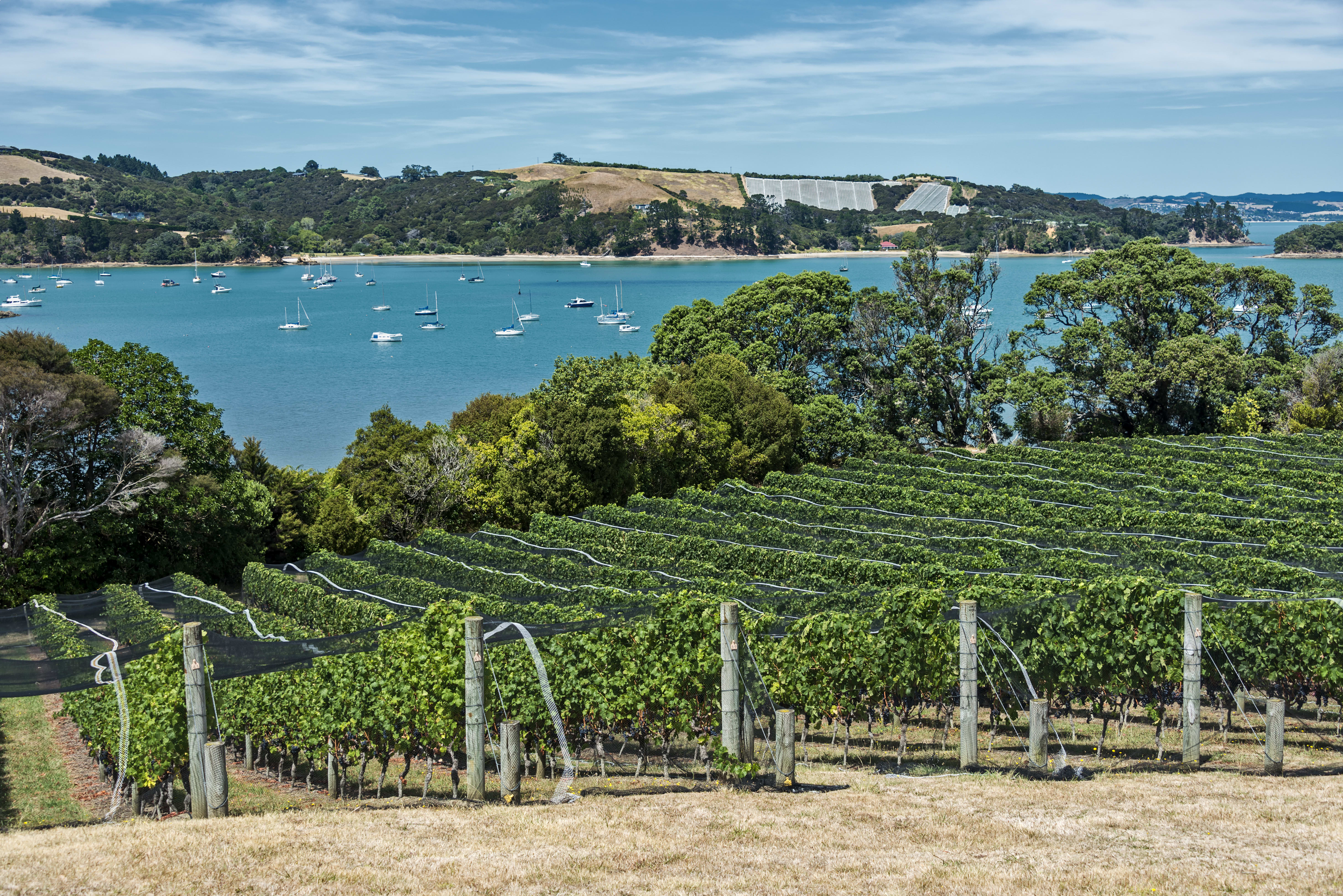
Don’t expect cheap, mass-produced wine: thanks to its small size, most wineries here are boutique, producing only a small number of bottles each year. Long famous for a Bordeaux blend combining Cabernet Sauvignon and Merlot, Waiheke is increasingly attracting attention for its Chardonnay and Syrah.
Waiheke is also home to several attractive beaches, including Oneroa, Palm Beach and Onetangi, perfect for swimming or kayaking in the gentle waters of the Hauraki Gulf. Walks meander around the cliff tops, past beaches, and through native forest. Look for the Stony Batter walkway at the eastern end of the island, which takes you through World War II gun emplacements and underground tunnels.
Visit Auckland with Odyssey Traveller
Odyssey Traveller visits Auckland as part of a number of New Zealand tours. Our tour of New Zealand, An Odyssey Down Under takes in both the North Island and the South Island. Our trip begins with a day tour of Auckland, before heading south to Rotorua, home to thermal hot springs and a centre of Maori culture. Following this, we pass through some of the North Island‘s most spectacular scenery: The Waimangu Volcanic Rift Valley, Lake Taupo, and the Tongariro Alpine Crossing. Our small group tour then heads to Wellington, New Zealand‘s capital, before crossing to the South Island. On the South Island we visit the pretty coastal town of Kaikoura, historic Christchurch, and windswept Dunedin, a southern city with an unlikely Scottish connection. We also take in some of the South Island‘s natural beauty, visiting Te Anau, Queenstown, Fjordland National Park, and Milford Sound.
Odyssey Traveller also spends several nights in Auckland as part of our guided tour of the North Island. While the South Island has many of New Zealand‘s big ticket draws, the North Island is just as fascinating. Our escorted tour takes the time to learn about Maori culture, visits the Art Deco town of Napier, and explores some of New Zealand‘s best wineries.
Adventure lovers will want to book on our New Zealand walking tour, which focuses on the stunning scenery of both the North and South Islands. On the North Island, we take on the challenging Tongariro Alpine Crossing hike, explore the beautiful Bay of Islands, and enjoy a walking tour through the Turangi Wetlands. On the South Island, we enjoy a scenic flight over the Southern Alps including Aoraki (Mount Cook), take on a section of the famous Milford Track, linking Milford Sound and Lake Te Anau, and spend time in beautiful Queenstown. This New Zealand tour also makes a trip to New Zealand‘s ‘third island‘, the wilderness of Stewart Island.
If you’re interested in a New Zealand vacation/holiday, think about joining an Odyssey tour. Our small group tours are designed especially for mature and senior travellers, who want an in-depth experience of their destination. We focus on culture, history, and the sense of place. Every Odyssey escorted tour is led by an expert tour operator/tour guide, chosen for their extensive local knowledge. We move in genuinely small groups, with most tours including 6-12 guests along with your tour director!
Odyssey Traveller is an Australian company which has been serving world travellers since 1983. In response to the coronavirus restrictions of recent months, we have developed a number of tours of Australia and New Zealand. We hope given the success of the New Zealand government and Australian government in combating the coronavirus outbreak – thanks to strict lockdown measures that have reduced the number of coronavirus cases – that travel between the two countries will be able to resume relatively soon. For years Odyssey has been bringing Australian and New Zealander travellers to the world: now is the time to truly explore our own part of the world.
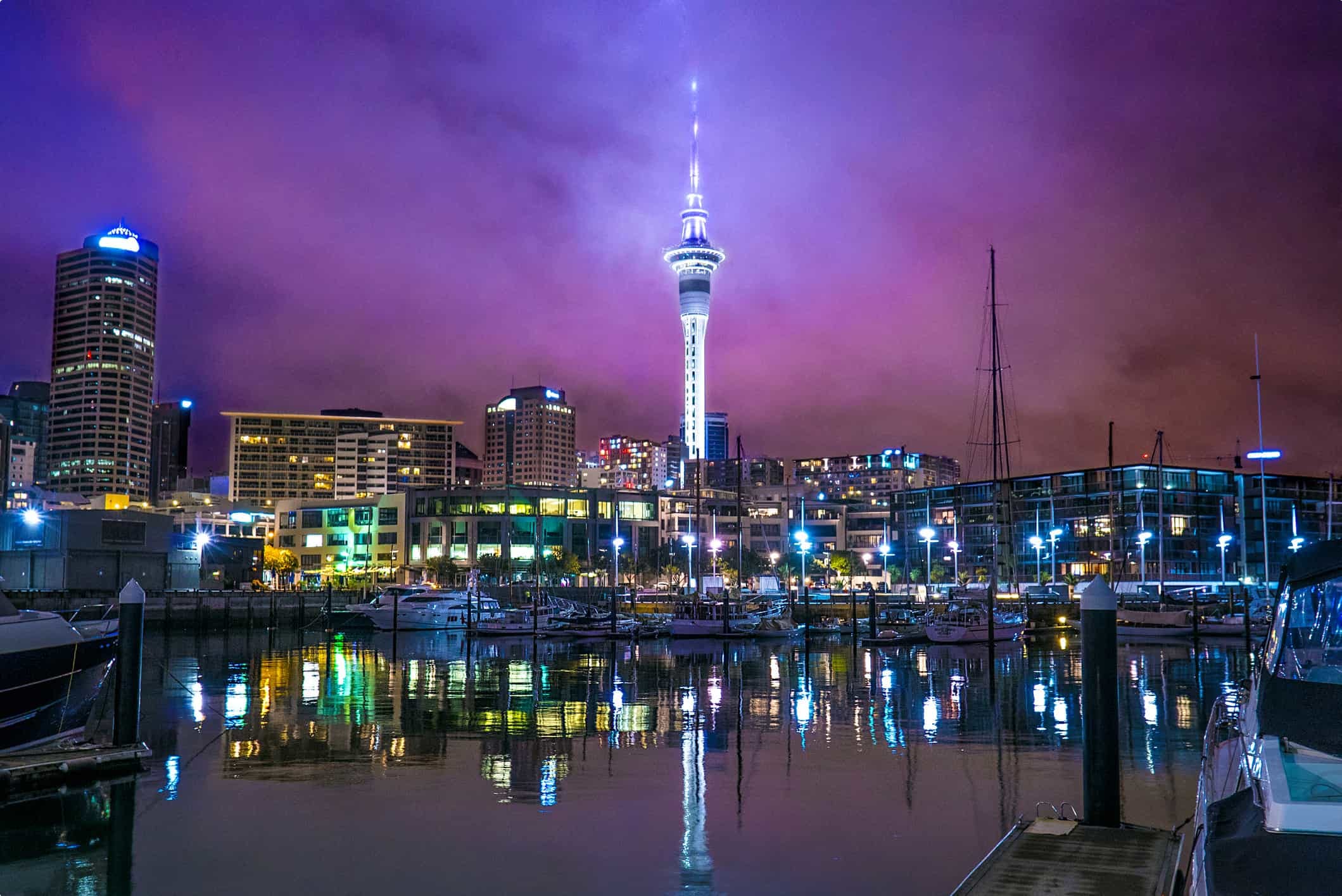
Articles about New Zealand published by Odyssey Traveller
- Questions About New Zealand
- The Foundations for Democracy in New Zealand (900 to 1945)
- Rotorua, New Zealand
For all the articles Odyssey Traveller has published for mature aged and senior travellers, click through on this link.
External articles to assist you on your visit to New Zealand
Related Tours
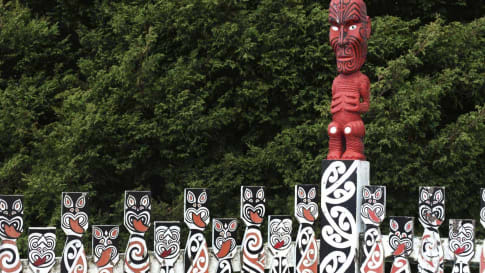
17 days
Oct, Feb, Apr, Sep, MarNew Zealand: An Odyssey Down Under
Visiting
A guided small group tour of both the North island and the South island. Your travel itinerary includes Auckland, Rotorua, Milford Sound, Queenstown and Christchurch. Maori culture also forms part of the journey to provide a memorable New Zealand tour experience.
From A$12,595 AUD
View Tour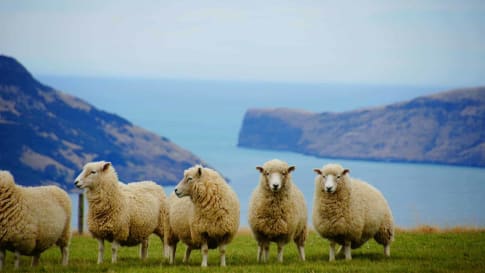
14 days
Aug, Sep, Oct, Nov, Feb +1Small group tour of New Zealand's North Island
Visiting
Escorted 13 day small group tour of the East coast of New Zealand’s North island. Off the beaten track, for like minded people curious about history, culture, wine and landscapes. Your tour director and local guides share their knowledge with you the traveller on this New Zealand tour for senior travellers.
From A$11,495 AUD
View Tour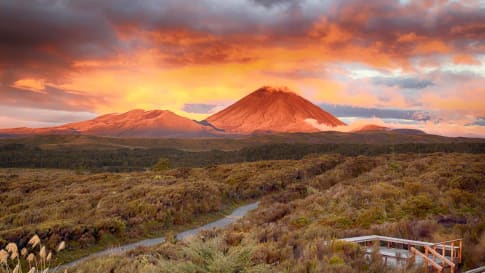
14 days
Mar, Sep, NovSmall group walking tour of New Zealand
Visiting
Escorted 14 day small group walking tour of New Zealand. Off the beaten track, for hiking fit like minded people curious about history, culture wine and landscapes.
From A$13,995 AUD
View Tour
